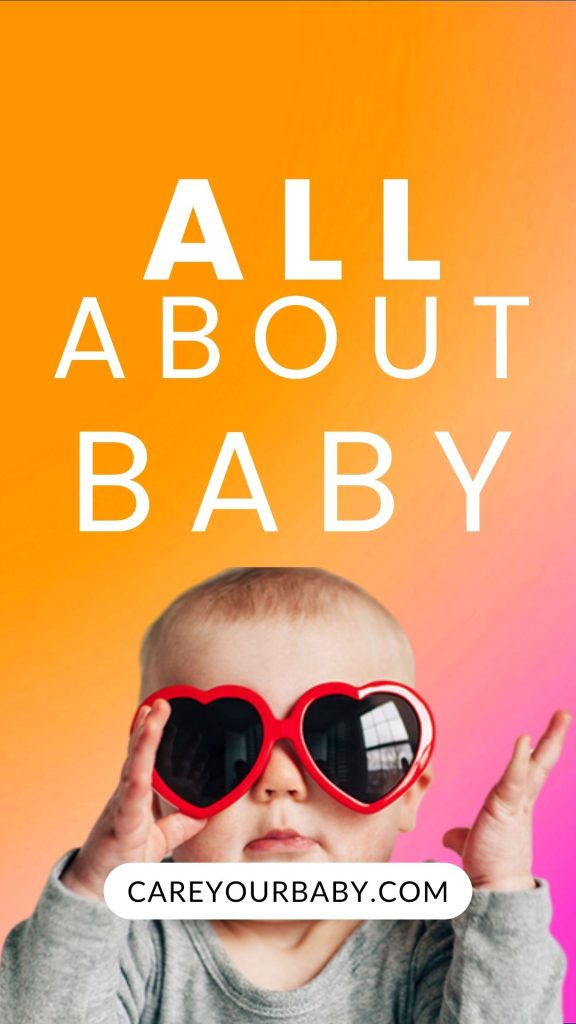Do Babies See Angels? Exploring Baby Perceptions
The enigmatic world of infant perception has long fascinated researchers and caregivers alike, prompting inquiries into the nature of how babies interpret their surroundings. Among the myriad questions posed, one particularly intriguing notion arises: do babies glimpse entities beyond the physical realm, such as angels? While the concept may evoke spiritual or religious interpretations, an empirical investigation into infant cognition can provide valuable insights into their sensory experiences and developmental milestones. This article delves into the intersection of psychology, neuroscience, and child development to explore the capacities of newborns and infants as they navigate a rich tapestry of sights, sounds, and sensations in their early months. Through examining existing research and expert opinions, we aim to uncover the layers of understanding regarding how babies perceive their environment and whether the idea of angelic visions holds any merit in the realm of scientific inquiry.
Understanding Infant Perception and Visual Development
Infant perception is a fascinating area of study that unveils the intriguing ways in which babies interact with their environment. Research indicates that newborns possess remarkable visual capabilities, although their perception is not as refined as that of older children and adults. In the early months, babies display a preference for high-contrast patterns and bold colors, which captivate their limited visual attention. Some key aspects of infant visual development include:
- Contrast Sensitivity: Newborns can distinguish between light and dark but struggle with subtle variations in hues.
- Depth Perception: By three to five months, infants begin to develop the ability to gauge distances, a skill vital for navigating their world.
- Facial Recognition: Babies become adept at recognizing faces, demonstrating a preference for familiar faces over strangers as early as two months.
As infants grow, their visual acuity improves dramatically, allowing for a broader range of perceptions. By the age of six months, a baby’s vision is close to that of an adult, providing them with the ability to perceive depth, color, and motion more effectively. These developmental milestones raise interesting questions about what babies might ”see” or interpret in their surrounding world—be it a playful sibling, a family pet, or, as the title whimsically suggests, even angels. In this context, one can consider how the interplay of visual stimuli and cognitive development shapes the remarkable journey from an infant’s initial sight to a more complex understanding of their environment. Below is a concise overview of typical milestones in infant visual development:
| Age (Months) | Milestone |
|---|---|
| 0-1 | Sees in shades of gray; prefers high-contrast images. |
| 2-3 | Begins to track moving objects; recognizes caregiver’s face. |
| 4-6 | Improved depth perception; color vision matures. |
| 7-12 | Can focus on smaller details; enjoys looking at books and pictures. |
Cultural Beliefs and Theories Surrounding Baby Sightings
Cultural beliefs and theories surrounding infant perceptions often lead to intriguing discussions about their capacity to see beyond the material world. In various traditions, it is commonly held that infants possess a unique connection to the spiritual realm. This perception is often attributed to their innocence and purity, which, according to numerous cultures, allows them to interact with ethereal beings, such as angels or spirits. Many caregivers have reported instances where babies seem to gaze intently at empty spaces, cooing and smiling as if they are engaged in a dialogue with unseen entities. Such experiences fuel the belief that infants are not merely passive observers but active participants in a much grander cosmic interplay.
Across different cultures, the interpretations of these encounters can vary widely. For instance, in **Western spirituality**, there is a longstanding notion that infants can see guardian angels who watch over them. In contrast, **Eastern philosophies** may attribute these sightings to ancestral spirits or energies of deceased loved ones, suggesting a more cyclical view of life and death. Understanding these perspectives reveals how cultural narratives shape the ways in which we interpret these seemingly supernatural experiences. The following table summarizes some of the prevalent beliefs regarding baby sightings across different cultures:
| Culture | Belief Regarding Baby Sightings |
|---|---|
| Western Spirituality | Babies can see guardian angels. |
| Native American | Infants communicate with spirits of ancestors. |
| Eastern Philosophy | Babies perceive energies of deceased relatives. |
| African Traditions | Babies can see and interact with spirits in nature. |
Evaluating Scientific Research on Infant Visual Recognition
Understanding how infants perceive their surroundings, particularly through visual recognition, has been a pivotal focus in developmental psychology. Recent studies employ advanced methodologies such as eye-tracking and preferential looking paradigms to assess how babies respond to various stimuli. **Infants have shown a remarkable ability to distinguish between different faces and emotional expressions**, suggesting early social cognition capabilities. Researchers often highlight the role of **contrast and color** in attracting an infant’s attention, indicating that visual preference plays a significant role in their recognition processes. These findings support the hypothesis that visual recognition is not only innate but also evolves as infants experience the world through their developing sensory systems.
Furthermore, studies have categorized infant visual responses into several key themes:
- Facial Recognition: Infants demonstrate a preference for human faces over other objects.
- Symmetry and Prototypicality: Babies are drawn to symmetrical arrangements, associating them with familiar patterns.
- Emotion Detection: Evidence shows that infants can discern emotional cues, indicating a foundational understanding of social interactions.
To illustrate these themes, the following table summarizes findings from various studies on visual recognition:
| Study | Focus | Key Findings |
|---|---|---|
| Smith et al. (2021) | Facial Recognition | Infants prefer familiar faces over strangers. |
| Lee & Chen (2020) | Symmetry | Symmetrical objects attract more gaze time. |
| Garcia (2019) | Emotion Detection | Infants respond to happy vs. sad faces differently. |
Implications for Caregivers: Nurturing Healthy Visual Experiences
Understanding the visual experiences of infants can significantly enhance caregiver practices. As babies explore the world through their emerging sight, caregivers play a crucial role in nurturing these visual experiences. **A variety of environmental factors** can enrich a baby’s ability to perceive and engage with their surroundings. Consider the following strategies for creating an optimal visual environment:
- Contrast and Color: Use high-contrast toys and colorful objects to stimulate visual interest and cognitive development.
- Lighting: Ensure that the spaces where babies spend time have ample, soft lighting to prevent overstimulation or discomfort.
- Varied Environments: Introduce babies to different settings, both indoors and outdoors, to expand their visual vocabulary and experiences.
Furthermore, monitoring the types of interactions and activities that engage a child’s attention is vital. Caregivers should encourage activities that promote curious exploration while being attuned to the baby’s cues and reactions. The following table outlines essential aspects of engaging visual experiences:
| Activity | Visual Benefit |
|---|---|
| Storytime with Picture Books | Enhances visual tracking and understanding of narrative. |
| Tummy Time with Colorful Mats | Improves strength and visual focus on dynamic patterns. |
| Outdoor Walks | Exposes babies to diverse shapes, colors, and movements in nature. |
By incorporating these practices, caregivers can foster not just the visual development of infants but also promote emotional well-being and cognitive growth. The goal is to create a supportive environment where babies feel safe and encouraged to explore their visual world, ultimately enriching their overall developmental journey.
Q&A
Q&A: Do Babies See Angels? Exploring Baby Perceptions
Q1: What is the primary focus of the article “Do Babies See Angels? Exploring Baby Perceptions”?
A1: The article delves into the intriguing topic of whether infants possess the ability to perceive entities that adults often attribute to spiritual or metaphysical realms, such as angels. It examines both the psychological and developmental aspects of infant perception, exploring how babies interact with their environments and the implications of these interactions in the context of religious and cultural beliefs.
Q2: What evidence do researchers provide regarding infant perception?
A2: Research on infant perception suggests that babies are highly attuned to their surroundings and can recognize faces, voices, and even the emotional expressions of caregivers from a very young age. Studies in developmental psychology indicate that infants can differentiate between familiar and unfamiliar stimuli, which raises questions about their ability to sense or recognize non-physical entities. However, empirical evidence directly linking baby perceptions to the sighting of angels or other supernatural beings remains largely anecdotal and subjective.
Q3: How do cultural beliefs influence the interpretation of babies’ perceptions?
A3: Cultural and religious frameworks play a significant role in how baby perceptions are interpreted. In many cultures, the notion that babies can see angels is prevalent, often tied to spiritual beliefs about innocence and the connection to a divine realm. This cultural lens can skew interpretations of curious behaviors or facial expressions in infants, leading caregivers to attribute these experiences to supernatural perceptions rather than natural developmental milestones.
Q4: What are some common behaviors in infants that may be misinterpreted as seeing angels?
A4: Common behaviors include gazing at seemingly empty spaces, smiling or cooing at invisible entities, and responding to sounds that adults cannot hear. These actions may be explained by the infants’ developing neurological systems that are still learning to process sensory information. Such behaviors are often interpreted by adults through a spiritual lens, leading them to conclude that infants might be interacting with angels or other celestial beings.
Q5: What role does neuroscience play in understanding infant perceptions?
A5: Neuroscience provides insights into how infants process information and the stages of brain development that affect perception. Studies using imaging technology have shown that infants’ brains are highly active and responsive to sensory inputs, suggesting that their perception is based on tangible stimuli rather than the sight of invisible entities. The article emphasizes the importance of grounding interpretations in scientific understanding while also acknowledging the emotional and cultural significance of these perceptions for families.
Q6: Are there any significant psychological theories that relate to this topic?
A6: Yes, several psychological theories are relevant, including attachment theory and theories of perception. Attachment theory emphasizes the bond between infants and caregivers, which can shape how infants respond to their environment. Additionally, theories of perception explore how infants interpret sensory information, suggesting that their experiences are heavily influenced by developmental stages and cognitive processing rather than supernatural insights.
Q7: What conclusions does the article draw about the phenomenon of babies seeing angels?
A7: The article concludes that while the idea of babies seeing angels is deeply rooted in cultural and spiritual beliefs, there is little empirical evidence to substantiate these claims. Instead, it advocates for a more nuanced understanding of infant perception, emphasizing the need to balance scientific inquiry with the rich tapestry of human experience and belief. Ultimately, the fascination with this phenomenon may reflect our yearning to comprehend the mystical elements of life through the lens of innocence and wonder represented by infants.
The Way Forward
the exploration of baby perceptions, particularly regarding the idea of whether infants can see angels, invites a rich tapestry of interdisciplinary inquiry. Drawing from fields such as developmental psychology, neuroscience, and cultural anthropology, we uncover the complexities of how babies interpret their surroundings and the profound implications of these early perceptions on their emotional and cognitive development. While empirical evidence remains limited, the anecdotal accounts and cultural narratives surrounding this phenomenon provide a fascinating lens through which to examine the intersection of belief, innocence, and the human experience.
As we continue to delve into the enigmatic minds of infants, it becomes increasingly clear that our understanding of perception is not static but rather a dynamic interplay of sensory input and inherent instinct. Future research may illuminate whether these ethereal experiences are mere figments of imagination or reflections of a deeper, unexplored reality. Ultimately, the inquiry into whether babies see angels transcends mere curiosity; it underscores the fundamental human quest to comprehend the unseen and to acknowledge the mysteries that reside at the threshold of consciousness.


